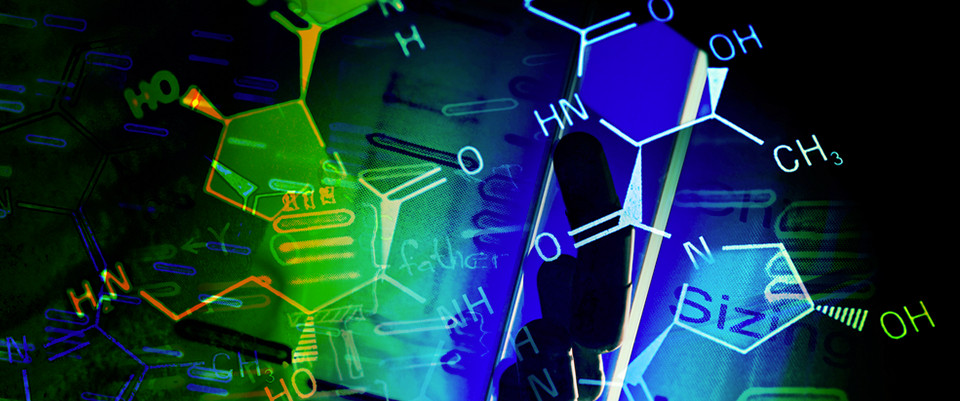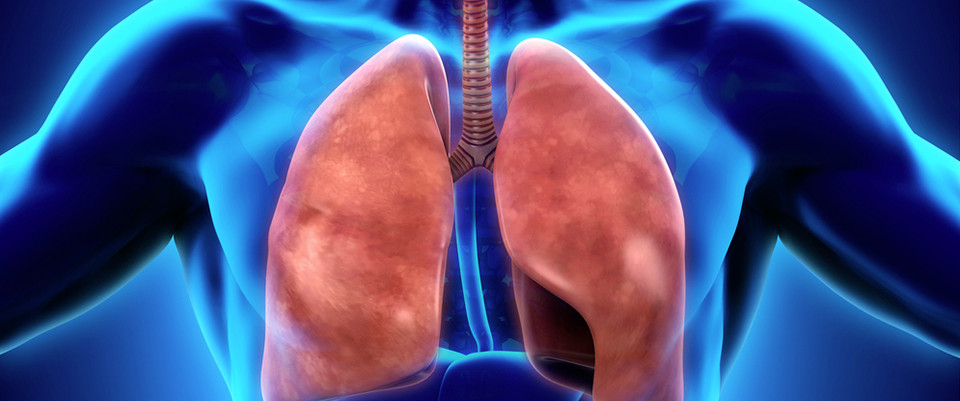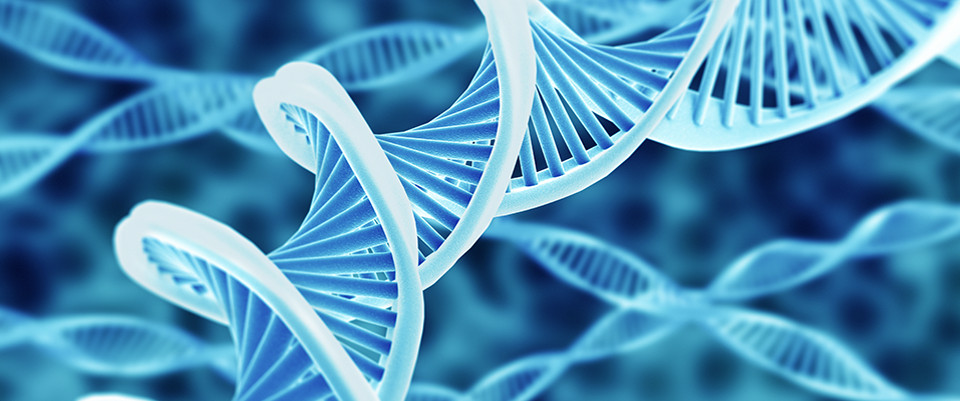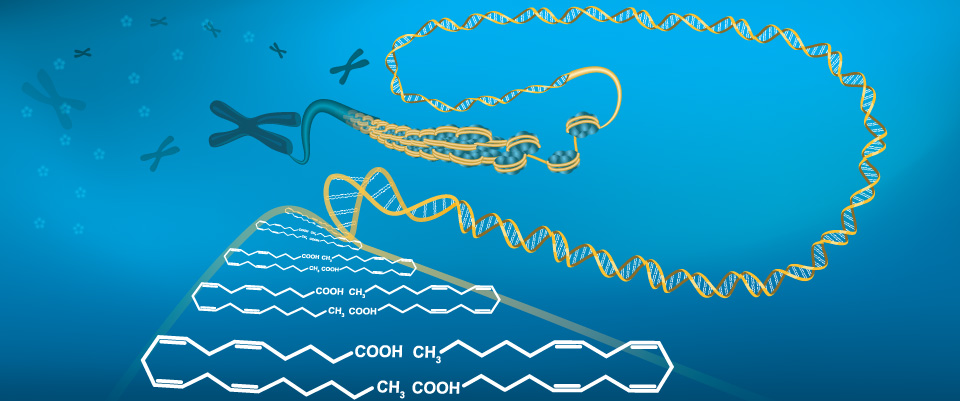PubMed
A metabolomic approach to investigate effects of ocean acidification on a polar microalga Chlorella sp.
A metabolomic approach to investigate effects of ocean acidification on a polar microalga Chlorella sp.
Aquat Toxicol. 2019 Nov 07;217:105349
Authors: Tan YH, Lim PE, Beardall J, Poong SW, Phang SM
Abstract
Ocean acidification, due to increased levels of anthropogenic carbon dioxide, is known to affect the physiology and growth of marine phytoplankton, especially in polar regions. However, the effect of acidification or carbonation on cellular metabolism in polar marine phytoplankton still remains an open question. There is some evidence that small chlorophytes may benefit more than other taxa of phytoplankton. To understand further how green polar picoplankton could acclimate to high oceanic CO2, studies were conducted on an Antarctic Chlorella sp. Chlorella sp. maintained its growth rate (∼0.180 d-1), photosynthetic quantum yield (Fv/Fm = ∼0.69) and chlorophyll a (0.145 fg cell-1) and carotenoid (0.06 fg cell-1) contents under high CO2, while maximum rates of electron transport decreased and non-photochemical quenching increased under elevated CO2. GCMS-based metabolomic analysis reveal that this polar Chlorella strain modulated the levels of metabolites associated with energy, amino acid, fatty acid and carbohydrate production, which could favour its survival in an increasingly acidified ocean.
PMID: 31734626 [PubMed - as supplied by publisher]
Lycium barbarum L. leaves ameliorate type 2 diabetes in rats by modulating metabolic profiles and gut microbiota composition.
Lycium barbarum L. leaves ameliorate type 2 diabetes in rats by modulating metabolic profiles and gut microbiota composition.
Biomed Pharmacother. 2019 Nov 13;121:109559
Authors: Zhao XQ, Guo S, Lu YY, Hua Y, Zhang F, Yan H, Shang EX, Wang HQ, Zhang WH, Duan JA
Abstract
The leaf of Lycium barbarum L. (LLB) has been widely used as a tea, vegetable, and herb in China and Southeast Asia for centuries; this is because of the hypoglycemic effect it has, but the mechanism behind this effect is still unclear. In this study, a type 2 diabetic mellitus (T2DM) rat model, induced by a high-fat diet combined with low-dose streptozotocin (STZ) injections, was adopted. The biochemical index was determined and the histopathological and metabolomics analyses of serum and urine and 16S rDNA sequencing of the gut microbiota were performed. We evaluated the hypoglycemic effects and the mechanism of action of the water extract from LLB, which contained neochlorogenic acid, chlorogenic acid, caffeic acid, and rutin (up to 6.06%). The relationships between biochemical indexes, serum and urine metabolites, and gut microbiota were analyzed. The results showed that the LLB extract could noticeably modulate the levels of blood glucose and lipids in diabetic rats as well as repair injuries in livers, kidneys and pancreas. The changes in serum and urine metabolites caused by T2DM were reversed after the administration of LLB; these changes were found to mainly be correlated with the following pathways: nicotinate and nicotinamide metabolism, arachidonic acid metabolism, and purine metabolism. Sequencing of the 16S rDNA from fecal samples showed that the LLB extract could reverse the gut microbiota dysbiosis that T2DM had induced. Therefore, we conclude that T2DM, which altered the metabolic profiles and gut microbiota, could be alleviated effectively using the LLB extract.
PMID: 31734581 [PubMed - as supplied by publisher]
Metabolic fingerprinting reveals extensive consequences of GLS hyperactivity.
Metabolic fingerprinting reveals extensive consequences of GLS hyperactivity.
Biochim Biophys Acta Gen Subj. 2019 Nov 14;:129484
Authors: Rumping L, Pras-Raves ML, Gerrits J, Tang YF, Willemsen MA, Houwen RHJ, van Haaften G, van Hasselt PM, Verhoeven-Duif NM, Jans JJM
Abstract
BACKGROUND: High glutaminase (GLS;EC3.5.1.2) activity is an important pathophysiological phenomenon in tumorigenesis and metabolic disease. Insight into the metabolic consequences of high GLS activity contributes to the understanding of the pathophysiology of both oncogenic pathways and inborn errors of glutamate metabolism. Glutaminase catalyzes the conversion of glutamine into glutamate, thereby interconnecting many metabolic pathways.
METHODS: We developed a HEK293-based cell-model that enables tuning of GLS activity by combining the expression of a hypermorphic GLS variant with incremental GLS inhibition. The metabolic consequences of increasing GLS activity were studied by metabolic profiling using Direct-Infusion High-Resolution Mass-Spectrometry (DI-HRMS).
RESULTS AND CONCLUSIONS: Of 12,437 detected features [m/z], 109 features corresponding to endogenously relevant metabolites were significantly affected by high GLS activity. As expected, these included strongly decreased glutamine and increased glutamate levels. Additionally, increased levels of tricarboxylic acid (TCA) intermediates with a truncation of the TCA cycle at the level of citrate were detected as well as increased metabolites of transamination reactions, proline and ornithine synthesis and GABA metabolism. Levels of asparagine and nucleotide metabolites showed the same dependence on GLS activity as glutamine. Of the nucleotides, especially metabolites of the pyrimidine thymine metabolism were negatively impacted by high GLS activity, which is remarkable since their synthesis depend both on aspartate (product of glutamate) and glutamine levels. Metabolites of the glutathione synthesizing γ-glutamyl-cycle were either decreased or unaffected.
GENERAL SIGNIFICANCE: By providing a metabolic fingerprint of increasing GLS activity, this study shows the large impact of high glutaminase activity on the cellular metabolome.
PMID: 31734463 [PubMed - as supplied by publisher]
Sniffing animals as a diagnostic tool in infectious diseases.
Sniffing animals as a diagnostic tool in infectious diseases.
Clin Microbiol Infect. 2019 Nov 14;:
Authors: Cambau E, Poljak M
Abstract
BACKGROUND: Scents and odours characterise some microbes when grown in the laboratory, and experienced clinicians can diagnose patients with some infectious diseases based on their smell. Animal sniffing is an innate behaviour, and animals' olfactory acuity is used for detecting people, weapons, bombs, narcotics and food.
OBJECTIVES: We briefly summarised current knowledge regarding the use of sniffing animals to diagnose some infectious diseases and the potential use of scent-based diagnostic instruments in microbiology.
SOURCES: Information was sought through PubMed and extracted from peer-reviewed literature published between January 2000 and September 2019 and from reliable online news. The search terms odour, scent, bacteria, diagnostics, tuberculosis, malaria and volatile compounds were used.
CONTENT: Four major areas of using sniffing animals are summarised. Dogs have been used to reliably detect stool associated with toxigenic Clostridioides difficile and for surveillance. Dogs showed high sensitivity and moderate specificity for detecting urinary tract infections in comparison to culture, especially for Escherichia coli. African giant pouched rats showed superiority for diagnosing tuberculosis over microscopy, but inferiority to culture/molecular methods. Several approaches to detecting malaria by analysing host skin odour or exhaled breath have been explored successfully. Some microbial infections produce specific volatile organic compounds (VOCs), which can be analysed by spectrometry, metabolomics or other analytical approaches to replace animal sniffing.
IMPLICATIONS: The results of some sniffing animal studies are fascinating, and animal sniffing can provide intermediate diagnostic solutions for some infectious diseases. Lack of reproducibility, cost of animal training and housing are major drawbacks for wider implementation of sniffing animals. The ultimate goal is to understand the biological background of this animal ability and to characterise specific VOCs that animals are recognising. VOC identification, improvement of odour sampling methods and development of point-of-care instruments could allow implementation of scent-based tests for major human pathogens.
PMID: 31734357 [PubMed - as supplied by publisher]
Effects of cadmium, inorganic mercury and methyl-mercury on the physiology and metabolomic profiles of shoots of the macrophyte Elodea nuttallii.
Effects of cadmium, inorganic mercury and methyl-mercury on the physiology and metabolomic profiles of shoots of the macrophyte Elodea nuttallii.
Environ Pollut. 2019 Nov 05;:113557
Authors: Cosio C, Renault D
Abstract
Macrophytes are known to bioaccumulate metals, but a thorough understanding of tolerance strategies and molecular impact of metals in aquatic plants is still lacking. The present study aimed to compare Hg and Cd effects in a representative macrophyte, Elodea nuttallii using physiological endpoints and metabolite profiles in shoots and cytosol. Exposure 24 h to methyl-Hg (30 ng L-1), inorganic Hg (70 ng L-1) and Cd (280 μg L-1) did not affect photosynthesis, or antioxidant enzymes despite the significant accumulation of metals, confirming a sublethal stress level. In shoots, Cd resulted in a higher level of regulation of metabolites than MeHg, while MeHg resulted in the largest number of regulated metabolites and IHg treatment regulated no metabolites significantly. In cytosol, Cd regulated more metabolites than IHg and only arginine, histidine and mannose were reduced by MeHg exposure. Kyoto Encyclopedia of Genes and Genomes (KEGG) pathway analysis of data suggested that exposure to MeHg resulted in biochemical changes including aminoacyl-tRNA biosynthesis, glycine, serine and threonine metabolism, nitrogen metabolism, arginine and proline metabolism, cyanoamino acid metabolism, while the treatment of Cd stress caused significant variations in aminoacyl-tRNA biosynthesis and branched-chain amino acids pathways. Data supports an impact of MeHg on N homeostasis, while Cd resulted in an osmotic stress-like pattern and IHg had a low impact. Marked differences in the responses to MeHg and IHg exposure were evidenced, supporting different molecular toxicity pathways and main impact of MeHg on non-soluble compartment, while main impact of IHg was on soluble compartment. Metabolomics was used for the first time in this species and proved to be very useful to confirm and complement recent knowledge gained by transcriptomics and proteomics, highlighting the high interest of multi-omics approaches to identify early impact of environmental pollution.
PMID: 31733966 [PubMed - as supplied by publisher]
Different effects of exposure to penconazole and its enantiomers on hepatic glycolipid metabolism of male mice.
Different effects of exposure to penconazole and its enantiomers on hepatic glycolipid metabolism of male mice.
Environ Pollut. 2019 Nov 05;:113555
Authors: Meng Z, Liu L, Xi Y, Jia M, Yan S, Tian S, Sun W, Zhu W, Li X, Zhou Z
Abstract
(±) - PEN is a chiral fungicide widely used to control powdery mildew in agriculture. Currently, only a few studies have investigated the toxic effects of (±) - penconazole ((±) - PEN) on non-target organisms, and whether (±) - PEN from the enantiomeric level have toxic effects remains unclear. In this study, we systematically evaluated the effects of exposure to (±) - PEN, (+) - PEN and (-) - PEN on liver function in mice. Biochemical and histopathological analyses showed that exposure to (±) - PEN and (-) - PEN led to significant liver damage and inflammation. However, exposure to (+) - PEN treatment did not cause no adverse effects on liver function and inflammation. 1H-NMR-based metabolomics revealed that exposure to (±) - PEN, (+) - PEN and (-) - PEN led to the animals developing liver metabolic disorder that was caused by changes in glycolipid metabolism. Quantitative analysis of genes regulating glycolipid metabolism revealed that expression of gluconeogenesis and glycolytic pathway genes were altered in individuals exposed to (±) - PEN, (+) - PEN and (-) - PEN. We also found that (±) - PEN, (+) - PEN and (-) - PEN have different effects on lipid metabolism of the liver. Exposure to (±) - PEN and (-) - PEN resulted in significant accumulation of lipids by regulating fatty acid synthesis, triglyceride synthesis, and fatty acid β oxidation pathways. In summary, we found different toxicological effects in individuals exposed to (±) - PEN, (+) - PEN and (-) - PEN. The results of this study are important for assessing the potential health risks of (±) - PEN.
PMID: 31733957 [PubMed - as supplied by publisher]
Metabolomics and the Microbiome as Biomarkers in Sepsis.
Metabolomics and the Microbiome as Biomarkers in Sepsis.
Crit Care Clin. 2020 Jan;36(1):105-113
Authors: Lee J, Banerjee D
Abstract
Metabolomics is an emerging field of research interest in sepsis. Metabolomics provides new ways of exploring the diagnosis, mechanism, and prognosis of sepsis. Advancements in technologies have enabled significant improvements in identifying novel biomarkers associated with the disease progress of sepsis. The use of metabolomics in the critically ill may provide new approaches to enable precision medicine. Furthermore, the dynamic interactions of the host and its microbiome can lead to further progression of sepsis. Understanding these interactions and the changes in the host's genomics and the microbiome can provide novel preventive and therapeutic strategies against sepsis.
PMID: 31733672 [PubMed - in process]
The depressed P cycle contributes to the acquisition of ampicillin resistance in Edwardsiella piscicida.
The depressed P cycle contributes to the acquisition of ampicillin resistance in Edwardsiella piscicida.
J Proteomics. 2019 Nov 13;:103562
Authors: Su YB, Kuang SF, Peng XX, Li H
Abstract
Antibiotic-resistant bacteria are an increasingly serious threat to human health and aquaculture. To further explore bacterial antibiotic resistance mechanism, iTRAQ is used to identify a differential proteome in ampicillin-resistant LTB4(LTB4-RAMP), a strain of Edwardsiella piscicida. A total of 102 differentially proteins with 50 upregulation and 52 downregulation are identified. Since many of these changes are related to metabolism, interactive pathways explorer(iPath) is used to understand a global differentially metabolic response in LTB4-RAMP. This analysis identifies a global depressed metabolic modulation as the most characteristic feature of LTB4-RAMP. Lower membrane potential and ATP in LTB4-RAMP than control support that the central carbon metabolism and energy metabolism are reduced. Since the pyruvate cycle(the P cycle) plays a key role in the central carbon metabolism and energy metabolism, further investigation focuses on the P cycle and shows that expression of genes and activity of enzymes in the P cycle are decreased in LTB4-RAMP. These results support the conclusion that the depressed P cycle contributes to the acquisition of ampicillin resistance in E.piscicida. These findings indicate that the combination of proteomics and iPath analysis can provide a global metabolic profile, which helps us better understand the correlation between ampicillin resistance and cellular metabolism. SIGNIFICANCE: The present study uses iTRAQ to explore ampicillin resistance mechanism in Edwardsiella piscicida and found many of these differential abundances of proteins are related to metabolism. iPath further identifies a global depressed metabolic modulation and characterizes the reduced pyruvate cycle as the most characteristic feature of the ampicillin-resistant E. piscicida, which is supported by reduced expression of genes and activity of enzymes in the pyruvate cycle. Consisitently, lower membrane potential and ATP are detetced. These results reveal the metabolic mechanism of ampicillin resistance and provide a solid proof to revert the resistance by reprogramming metabolomics.
PMID: 31733415 [PubMed - as supplied by publisher]
Premature cell senescence in human skin: dual face in chronic acquired pigmentary disorders.
Premature cell senescence in human skin: dual face in chronic acquired pigmentary disorders.
Ageing Res Rev. 2019 Nov 13;:100981
Authors: Bellei B, Picardo M
Abstract
Although senescence was originally described as an in vitro acquired cellular characteristic, it was recently recognized that senescence is physiologically and pathologically involved in aging and age-related diseases in vivo. The definition of cellular senescence has expanded to include the growth arrest caused by various cellular stresses, including DNA damage, inadequate mitochondria function, activated oncogene or tumor suppressor genes and oxidative stress. While senescence in normal aging involves various tissues over time and contributes to a decline in tissue function even with healthy aging, disease-induced premature senescence may be restricted to one or a few organs triggering a prolonged and more intense rate of accumulation of senescent cells than in normal aging. Organ-specific high senescence rate could lead to chronic diseases, especially in post-mitotic rich tissue. Recently, two opposite acquired pathological conditions related to skin pigmentation were described to be associated with premature senescence: vitiligo and melasma. In both cases, it was demonstrated that pathological dysfunctions are not restricted to melanocytes, the cell type responsible for melanin production and transport to surrounding keratinocytes. Similar to physiological melanogenesis, dermal and epidermal cells contribute directly and indirectly to deregulate skin pigmentation as a result of complex intercellular communication. Thus, despite senescence usually being reported as a uniform phenotype sharing the expression of characteristic markers, skin senescence involving mainly the dermal compartment and its paracrine function could be associated with the disappearance of melanocytes in vitiligo lesions and with the exacerbated activity of melanocytes in the hyperpigmentation spots of melasma. This suggests that the difference may arise in melanocyte intrinsic differences and/or in highly defined microenvironment peculiarities poorly explored at the current state of the art. A similar dualistic phenotype has been attributed to intratumoral stromal cells as cancer-associated fibroblasts presenting a senescent-like phenotype which influence the behavior of neoplastic cells in either a tumor-promoting or tumor-inhibiting manner. Here, we present a framework dissecting senescent-related molecular alterations shared by vitiligo and melasma patients and we also discuss disease-specific differences representing new challenges for treatment.
PMID: 31733332 [PubMed - as supplied by publisher]
Dysregulation of de novo nucleotide biosynthetic pathway enzymes in cancer and targeting opportunities.
Dysregulation of de novo nucleotide biosynthetic pathway enzymes in cancer and targeting opportunities.
Cancer Lett. 2019 Nov 13;:
Authors: Robinson AD, Eich ML, Varambally S
Abstract
Cancer is a disease of uncontrolled cell growth and a major cause of death worldwide. Many molecular events characterize tumor initiation and progression. Global gene expression analyses using next-generation sequencing, proteomics and metabolomics show genomic, epigenetic, and metabolite concentration changes in various tumors. Molecular alterations identified include multiple cancer-driving mutations, gene fusions, amplifications, deletions, and post-translational modifications. Data integration from many high-throughput platforms unraveled dysregulation in many metabolic pathways in cancer. Since cancer cells are fast-growing, their metabolic needs are enhanced, hence the requirement for de novo synthesis of essential metabolites. One critical requirement of fast-growing cells and a historically important pathway in cancer is the nucleotide biosynthetic pathway and its enzymes are valuable targets for small molecule inhibition. Purines and pyrimidines are building blocks of DNA synthesis and due to their excessive growth, cancer cells extensively utilize de novo pathways for nucleotide biosynthesis. Methotrexate, one of the early chemotherapeutic agents, targets dihydrofolate reductase of the folate metabolic pathway that is involved in nucleotide biosynthesis. In this review, we discuss the nucleotide biosynthetic pathways in cancer and targeting opportunities.
PMID: 31733288 [PubMed - as supplied by publisher]
An NMR based panorama of the heterogeneous biology of acute respiratory distress syndrome (ARDS) from the standpoint of metabolic biomarkers.
An NMR based panorama of the heterogeneous biology of acute respiratory distress syndrome (ARDS) from the standpoint of metabolic biomarkers.
NMR Biomed. 2019 Nov 16;:e4192
Authors: Viswan A, Singh C, Kayastha AM, Azim A, Sinha N
Abstract
Acute respiratory distress syndrome (ARDS), manifested by intricate etiology and pathophysiology, demands careful clinical surveillance due to its high mortality and imminent life support measures. NMR based metabolomics provides an approach for ARDS which culminates from a wide spectrum of illness thereby confounding early manifestation and prognosis predictors. 1 H NMR with its manifold applications in critical disease settings can unravel the biomarker of ARDS thus holding potent implications by providing surrogate endpoints of clinical utility. NMR metabolomics which is the current apogee platform of omics trilogy is contributing towards the possible panacea of ARDS by subsequent validation of biomarker credential on larger datasets. In the present review, the physiological derangements that jeopardize the whole metabolic functioning in ARDS are exploited and the biomarkers involved in progression are addressed and substantiated. The following sections of the review also outline the clinical spectrum of ARDS from the standpoint of NMR based metabolomics which is an emerging element of systems biology. ARDS is the main premise of intensivists textbook, which has been thoroughly reviewed along with its incidence, progressive stages of severity, new proposed diagnostic definition, and the preventive measures and the current pitfalls of clinical management. The advent of new therapies, the need for biomarkers, the methodology and the contemporary promising approaches needed to improve survival and address heterogeneity have also been evaluated. The review has been stepwise illustrated with potent biometrics employed to selectively pool out differential metabolites as diagnostic markers and outcome predictors. The following sections have been drafted with an objective to better understand ARDS mechanisms with predictive and precise biomarkers detected so far on the basis of underlying physiological parameters having close proximity to diseased phenotype. The aim of this review is to stimulate interest in conducting more studies to help resolve the complex heterogeneity of ARDS with biomarkers of clinical utility and relevance.
PMID: 31733128 [PubMed - as supplied by publisher]
A pilot investigation of a urinary metabolic biomarker discovery in renal cell carcinoma.
Related Articles
A pilot investigation of a urinary metabolic biomarker discovery in renal cell carcinoma.
Int Urol Nephrol. 2019 Nov 16;:
Authors: Zhang M, Liu X, Liu X, Li H, Sun W, Zhang Y
Abstract
BACKGROUND: Renal cell carcinoma (RCC) is the most common and lethal malignancy of the kidney. Distinguishing RCC from benign renal tumors and healthy controls is still a clinical challenge. Urine metabolomics has been used to identify biomarkers of clinical diseases.
METHODS: In the present study, we explored the urine metabolomes of a cohort of 61 patients with renal tumors (39 RCC and 22 benign renal tumors) and 68 healthy controls using liquid chromatography coupled with high-resolution mass spectrometry (LC-MS).
RESULTS: Metabolic profiling of urine could significantly differentiate RCC from healthy controls and benign renal tumors. Metabolic pathways, including lysine metabolism and phenylalanine metabolism, were found to be disturbed in the RCC group. Steroid hormone biosynthesis was significantly different between the benign tumor group and the RCC group. RCC biomarkers were further explored. A metabolite panel consisting of cortolone, testosterone and L-2-aminoadipate adenylate was discovered to have good ability of distinguishing RCC from benign tumors, with an AUC of 0.868 for tenfold cross-validation and 0.873 for the validation group. In addition, the panel of aminoadipic acid, 2-(formamido)-N1-(5-phospho-D-ribosyl) acetamidine and alpha-N-phenylacetyl-L-glutamine could distinguish the RCC group from the healthy control group, with an AUC of 0.841 for tenfold cross-validation and 0.894 for the validation group.
CONCLUSIONS: This pilot study suggests that urine metabolomics may be useful in differentiating RCC from healthy controls and benign renal tumors.
PMID: 31732842 [PubMed - as supplied by publisher]
Detection and comparison of phenolic compounds in different extracts of black currant leaves by liquid chromatography coupled with high-resolution ESI-LTQ-Orbitrap MS and high-sensitivity ESI-Qtrap MS.
Related Articles
Detection and comparison of phenolic compounds in different extracts of black currant leaves by liquid chromatography coupled with high-resolution ESI-LTQ-Orbitrap MS and high-sensitivity ESI-Qtrap MS.
J Pharm Biomed Anal. 2019 Oct 28;:112926
Authors: D'Urso G, Montoro P, Piacente S
Abstract
Liquid preparations such as tinctures and infusion derived from Ribes nigrum L. (black currant) leaves are widely used in Europe. Despite the various uses reported for the infusion and hydroalcoholic extracts of the leaves of this species, their chemical profile has not yet been defined. In the present study, the infusion, hydroalcholic and methanolic extracts prepared from R. nigrum leaves were analyzed. LC-MS analyses of these extracts allowed the characterization of 31 phenolic compounds mainly belonging to organic acids, flavonoids, catechins and its oligomers. Quantitative results proved that these preparations are a rich source of polyphenols and flavonoids and among them the infusion presented the highest polyphenol levels. A metabolomics approach was also used for the comparison and evaluation of the chemical composition of the different extracts obtained from R. nigrum leaves.
PMID: 31732405 [PubMed - as supplied by publisher]
In vitro cytotoxic activity of six Syzygium leaf extracts as related to their phenolic profiles: An untargeted UHPLC-QTOF-MS approach.
Related Articles
In vitro cytotoxic activity of six Syzygium leaf extracts as related to their phenolic profiles: An untargeted UHPLC-QTOF-MS approach.
Food Res Int. 2019 Dec;126:108715
Authors: Rocchetti G, Lucini L, Ahmed SR, Saber FR
Abstract
Untargeted metabolomics was used in this study to discriminate the phenolic fingerprints of six Syzygium species. This approach resulted in the annotation of 441 compounds that belong to different phenolic classes, such as flavonoids, lignans, stilbenes, tyrosols, alkylphenols, and phenolic acids. Multivariate data analysis unraveled the main differences between the studied species. S. paniculatum and S. aqueum were the richest sources in terms of phenolic compounds, cumulatively amounting to 355.3 and 266.4 mg/g dry matter, respectively. Nevertheless, S. jambos showed reduced amounts of phenolics, when compared with other species. The biological activity of Syzygium leaf extracts was assessed on MCF-7 breast adenocarcinoma and MDA-MB-231 breast cancer cell lines. Potent estrogenic activity was detected using the SRB assay on MCF-7. This activity may be ascribable to the presence of phenolic compounds miming phytoestrogens such as lignans, stilbenes, and isoflavonoids in the investigated Syzygium extracts. By examining the biological effect of Syzygium extracts against MDA-MB-231 cell lines, the Syzygium gratum leaf extract exhibited the strongest inhibition, with IC50 = 19.4 µg/mL, followed by S. paniculatum (IC50 = 50.9 µg/mL). However, the Syzygium gratum leaf extract showed a potent cytotoxic effect on normal human skin fibroblasts, HSF (IC50 = 1.24 µg/mL), assuming a nonselective cytotoxic effect. On the other hand, other studied Syzygium leaves proved as safe nutraceuticals (IC50 ≥ 100 µg/mL) on HSF cell lines. Our study suggested a possible implication of Syzygium malaccense and Syzygium aqueum leaves as potential estrogenic candidates in relation to their health-promoting phenolic constituents.
PMID: 31732075 [PubMed - in process]
The changes in the release level of polyunsaturated fatty acids (ω-3 and ω-6) and lipids in the untreated and water-soaked chia seed.
Related Articles
The changes in the release level of polyunsaturated fatty acids (ω-3 and ω-6) and lipids in the untreated and water-soaked chia seed.
Food Res Int. 2019 Dec;126:108665
Authors: Zare T, Rupasinghe TWT, Boughton BA, Roessner U
Abstract
Despite recent studies on health benefits of chia seed owing to its high content of ω-3 fatty acids, little work has been conducted on extractability of its nutrients. We examined the effect of soaking chia seed in water on the extractability of its omega fatty acids and lipids. State-of-the-art mass spectrometry techniques including GC-MS, LC-MS, and MALDI-MSI were utilized to identify and determine the spatial distribution of omega fatty acids and lipids in chia seed. Results showed that 24 h soaking in water improves the extractability of omega fatty acids and the ω-6:ω-3 ratio. Increase in the release levels of triacylglycerols and diacylglycerols and reduction in the release levels of phosphatidylcholines are envisaged to be the result of cell wall weakening and consequently availability of lipids for extraction. Results of MALDI-MSI show that highly abundant lipid species are mainly localised in the chia seed endosperm rather than its mucilage.
PMID: 31732052 [PubMed - in process]
Identification of phenolic markers for saffron authenticity and origin: An untargeted metabolomics approach.
Related Articles
Identification of phenolic markers for saffron authenticity and origin: An untargeted metabolomics approach.
Food Res Int. 2019 Dec;126:108584
Authors: Senizza B, Rocchetti G, Ghisoni S, Busconi M, De Los Mozos Pascual M, Fernandez JA, Lucini L, Trevisan M
Abstract
Saffron is a high-quality and expensive spice being widely subjected to adulteration. An UHPLC-ESI/QTOF-MS metabolomic-based approach was therefore used to investigate the discrimination potential between adulterated (added with different percentage of other parts of the flower) and authentic saffron, as well as to trace its geographical origin. Both unsupervised (hierarchical clustering) and supervised OPLS-DA multivariate statistics allowed discriminating authentic saffron from styles added of other floral components, as well as PDO (Protected Designation of Origin) vs non PDO saffron samples according to their chemical fingerprints. The proposed markers were then validated through ROC curves. Anthocyanins and glycosidic flavonols were the best markers of the styles' adulteration. However, other flavonoids (mainly free flavonols and flavones), together with protocatechuic aldehyde and isomeric forms of hydroxybenzoic acid, were also validated as markers for the discrimination of PDO vs non PDO saffron samples. This work outlines the potential of untargeted metabolomics based on UHPLC-ESI/QTOF mass spectrometry for saffron authenticity and traceability.
PMID: 31732022 [PubMed - in process]
Comparative metabolite fingerprinting of legumes using LC-MS-based untargeted metabolomics.
Related Articles
Comparative metabolite fingerprinting of legumes using LC-MS-based untargeted metabolomics.
Food Res Int. 2019 Dec;126:108666
Authors: Llorach R, Favari C, Alonso D, Garcia-Aloy M, Andres-Lacueva C, Urpi-Sarda M
Abstract
Legumes are a well-known source of phytochemicals and are commonly believed to have similar composition between different genera. To date, there are no studies evaluating changes in legumes to discover those compounds that help to discriminate for food quality and authenticity. The aim of this work was to characterize and make a comparative analysis of the composition of bioactive compounds between Cicer arietinum L. (chickpea), Lens culinaris L. (lentil) and Phaseolus vulgaris L. (white bean) through an LC-MS-Orbitrap metabolomic approach to establish which compounds discriminate between the three studied legumes. Untargeted metabolomic analysis was carried out by LC-MS-Orbitrap from extracts of freeze-dried legumes prepared from pre-cooked canned legumes. The metabolomic data treatment and statistical analysis were realized by using MAIT R's package, and final identification and characterization was done using MSn experiments. Fold-change evaluation was made through Metaboanalyst 4.0. Results showed 43 identified and characterized compounds displaying differences between the three legumes. Polyphenols, mainly flavonol and flavanol compounds, were the main group with 30 identified compounds, followed by α-galactosides (n = 5). Fatty acyls, prenol lipids, a nucleoside and organic compounds were also characterized. The fold-change analysis showed flavanols as the wider class of discriminative compounds of lentils compared to the other legumes; prenol lipids and eucomic acids were the most discriminative compounds of beans versus other legumes and several phenolic acids (such as primeveroside salycilic), kaempferol derivatives, coumesterol and α-galactosides were the most discriminative compounds of chickpeas. This study highlights the applicability of metabolomics for evaluating which are the characteristic compounds of the different legumes. In addition, it describes the future application of metabolomics as tool for the quality control of foods and authentication of different kinds of legumes.
PMID: 31732019 [PubMed - in process]
Plasma Metabolic Profiling Analysis of Gout Party on Acute Gout Arthritis Rats Based on UHPLC-Q-TOF/MS Combined with Multivariate Statistical Analysis.
Related Articles
Plasma Metabolic Profiling Analysis of Gout Party on Acute Gout Arthritis Rats Based on UHPLC-Q-TOF/MS Combined with Multivariate Statistical Analysis.
Int J Mol Sci. 2019 Nov 15;20(22):
Authors: Wang Y, Bi C, Pang W, Liu Y, Yuan Y, Zhao H, Zhang T, Zhao Y, Li Y
Abstract
Gout Party is a Chinese medicine prescription composed of Aconiti Lateralis Radix Praeparaia, Aconiti Radix Cocta, Cremastrae Pseudobulbus Pleiones Pseudobulbus, Smilacis Glabrae Rhizoma, Rehmanniae Radix, and Glycyrrhizae Radix et Rhizoma, which can relieve joint pain caused by gouty arthritis (GA) and rheumatoid, and has a therapeutic effect on acute gouty arthritis (AGA). However, little information is available on the molecular biological basis and therapeutic mechanism of Gout Party for the treatment of AGA. AGA model was established by injecting sodium urate, and colchicine served as a positive control drug. We established a metabolomic method based on ultra-high-performance liquid chromatography-tandem quadrupole/time-of-flight mass spectrometry (UHPLC-Q-TOF/MS) to analyze the plasma samples of model group rats and blank group rats. Multiple statistical analyses, including principal component analysis (PCA) and partial least square discrimination analysis (PLS-DA), were used to examine metabolite profile changes in plasma samples. Finally, we identified 2-ketobutyric acid, 3-hexenedioic acid, but-2-enoic acid, and so on; 22 endogenous metabolites associated with AGA. After successful molding, we found that 2-ketobutyric acid, 3-hexenedioic acid, but-2-enoic acid, argininic acid, galactonic acid, lactic acid, equol 4'-O-glucuronide, deoxycholic acid glycine conjugate, glycocholic acid, sphinganine 1-phosphate, LPE (0:0/20:3), LPE (0:0/16:0), LPC (15:0) decreased significantly (p < 0.05 or p < 0.01), alanine, erythrulose, 3-dehydrocarnitine, m-methylhippuric acid, 3-hydroxyoctanoic acid, p-cresol sulfate, estriol 3-sulfate 16-glucuronide, 10-hydroxy-9-(phosphonooxy)octadecenoate, docosahexaenoic acid increased significantly (p < 0.05 or p < 0.01). After Gout Party treatment, 14 biomarkers had a tendency to normal conditions. These above biomarkers were mainly involved in fatty acid metabolism, bile acid metabolism, amino acid metabolism, and energy metabolism pathways. These results suggested that Gout Party exerted therapeutic effects of treating AGA by improving energy metabolism disorder and amino acid metabolism dysfunction, and attenuating fatty acid metabolism abnormal and inflammation. The results of this experiment provided a reference for revealing the metabolic mechanism produced by Gout Party in the treatment of AGA, but the subsequent studies need to be further improved and supported by relevant cell experiments and clinical experiments.
PMID: 31731809 [PubMed - in process]
White Kidney Bean (Phaseolus Vulgaris L.) Consumption Reduces Fat Accumulation in a Polygenic Mouse Model of Obesity.
Related Articles
White Kidney Bean (Phaseolus Vulgaris L.) Consumption Reduces Fat Accumulation in a Polygenic Mouse Model of Obesity.
Nutrients. 2019 Nov 15;11(11):
Authors: Neil ES, McGinley JN, Fitzgerald VK, Lauck CA, Tabke JA, Streeter-McDonald MR, Yao L, Broeckling CD, Weir TL, Foster MT, Thompson HJ
Abstract
Clinical studies indicate that eating common bean, Phaseolus vulgaris L., plays a role in body weight regulation but mechanisms have yet to be elucidated. Here, we investigated the anti-obesogenic activity of white kidney bean in a mouse model of dietary-induced obesity. Bean consumption reduced the accumulation of adipose tissue in male and female C57BL6 mice. The anti-obesogenic effect of white kidney bean was not due to alterations in energy intake, energy excreted in the feces, or feed efficiency ratio. While bean consumption increased the mass of the intestine, no marked differences were consistently observed in crypt height, mucin content of goblet cells, proliferation index or zone of proliferation. However, significantly higher concentrations of total bacteria and of Akkermansia muciniphila were detected in cecal content of bean-fed mice, and the ratio of Firmicutes to Bacteroidetes was reduced. Bile acid content was higher in the ileum of bean-fed mice, but transcript levels of farnesoid X receptor were not significantly affected. Whether changes in bile-acid-mediated cell signaling play a role in bean-related differences in fat accumulation and/or overall metabolic health requires further investigation.
PMID: 31731665 [PubMed - in process]
Seasonal Changes in the Metabolic Profiles and Biological Activity in Leaves of Diospyros digyna and D. rekoi "Zapote" Trees.
Related Articles
Seasonal Changes in the Metabolic Profiles and Biological Activity in Leaves of Diospyros digyna and D. rekoi "Zapote" Trees.
Plants (Basel). 2019 Oct 25;8(11):
Authors: Ramírez-Briones E, Rodríguez-Macías R, Salcedo-Pérez E, Ramírez-Chávez E, Molina-Torres J, Tiessen A, Ordaz-Ortiz J, Martínez-Gallardo N, Délano-Frier JP, Zañudo-Hernández J
Abstract
Leaves of semi-domesticated Diospyros digyna and wild D. rekoi trees, sampled seasonally in Mexico in 2014, were analyzed. Metabolic fingerprints revealed higher metabolite diversity in D. rekoi leaves. The TLC bands characteristic of glycosylated flavonoids, predominant in this species, matched the detection of quercetin and quercetin 3-O-glucuronides by liquid chromatography (UPLC-MS) of spring leaf extracts (LEs). Further gas chromatography (GC-MS) analysis revealed abundant fatty acids, organic acids, and secondary metabolites including trigonelline, p-coumaric, and ferulic and nicotinic acids. Phenolic-like compounds prevailed in D. digyna LEs, while unidentified triterpenoids and dihydroxylated coumarins were detected by UPLC-MS and GC-MS. A paucity of leaf metabolites in leaves of this species, compared to D. rekoi, was evident. Higher antioxidant capacity (AOC) was detected in D. digyna LEs. The AOC was season-independent in D. digyna but not in D. rekoi. The AOC in both species was concentrated in distinct TLC single bands, although seasonal variation in band intensity was observed among trees sampled. The AOC in D. digyna LEs could be ascribed to the coumarin esculetin. The LEs moderately inhibited phytopathogenic bacteria but not fungi. Leaf chemistry differences in these Mesoamerican Diospyros species substantiated previous variability reported in tree physiology and fruit physical chemistry, postulated to result from domestication and seasonality.
PMID: 31731430 [PubMed]











